How to Spot a Windows Defender Order Scam [Easy Guide]
9 min. read
Updated on
Read our disclosure page to find out how can you help Windows Report sustain the editorial team. Read more
Key notes
- There are many ways for scammers to trick you into doing what they want using your computer.
- It’s easy to spot a Windows Defender order scam, but it’s also easy to fall for one.
- Although Windows Defender is supposed to offer your PC protection, it could also expose you to scams.
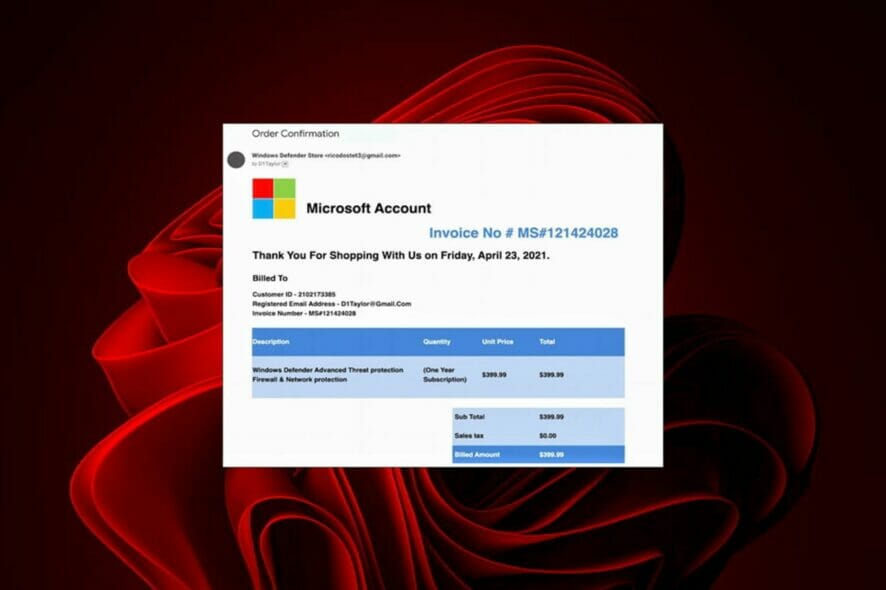
Windows Defender order scams are a common way for crooks to get your money. Cybercriminals have devised this method to steal your personal information.
Once they access your details, they gain unauthorized access to your computer or use your computer to distribute malware. It’s a way they get you to do what they want so they can get what they want.
You may fall victim to this scam if you are experiencing difficulties updating your Windows Defender but worry not as our expert guide has solutions to bypass the issue.
Although Microsoft has made significant strides in the security of Windows with advanced technology, scammers are also getting more creative with their methods. It is important to stay vigilant lest you fall for one of these scams and end up losing some money or personal data.

Secure your devices with award-winning cybersecurity technology.

Maximize your PC's security and performance with top-notch digital threat detection.

Keep secure with groundbreaking AI detection and prevention technology.

Browse the web securely for up to 3 devices across Windows, Mac, iOS or Android systems.

Best security tool for intense browsing activity.
What does a Windows Defender order scam mean?
A Windows Defender order scam is an attempt to trick you into paying for a subscription to Microsoft Defender Antivirus software.
This normally happens if you’re not running a genuine version of Windows on your PC. You may also fall victim if you’re running an older version of Windows that doesn’t include built-in virus protection.
Windows Defender is a free in-built program for Windows computers that helps protect your PC against viruses, spyware, and other malicious software.
The scam can be very hard to spot, especially if you’re not familiar with how Microsoft and its products work. You can find out more about Windows Defender in our comprehensive article to be better prepared.
Quick Tip
Phishing scams rely on collecting personal information like name, date of birth, social security number, and others to steal your identity which leads to massive financial consequences.
To protect you from that, you can try an automatic data removal program that helps you delete your data from numerous databases to fully secure your privacy.

Incogni
Let Incogni handle your removal requests and save you a lot of time and effort.What techniques do scammers use?
A Windows Defender scam can manifest itself in various ways. It can be in the form of a fake antivirus. You may also be duped into downloading and installing a program on your computer.
Scam techniques can be broken down into three categories:
- Trick you into giving them access to your computer. For example, you might receive an email about a software update for your computer, and when you click the link it takes you to a page that asks for administrator privileges on your device.
- Trick you into downloading malware. For example, someone may send you an email with a malicious attachment that looks like it’s from someone you trust, such as your bank or a family member. Once you click on the link, your PC becomes infected with malware. Microsoft products are available on the official website or Microsoft Store. You can only download Windows Defender from trusted platforms.
- Trick you into revealing personal information. For example, someone may call claiming to be from Microsoft and saying there’s a problem with your computer. The scammers then use this information to access your personal computer, emails, or even bank accounts.
How do tech support scams work?
Tech support scams work in various ways. However, the end goal is always to get you to buy something that you don’t really need. It could be a tool, an upgrade, or a service that’s being sold.
While some tech support scams are run by phone alone, others use pop-up messages on your computer.
Some of these messages seem to come from legitimate companies like Microsoft. They always say that you need to call their support line immediately. These messages often freeze your computer so that you can’t close them unless you restart your system.
The best way to spot a scam is to know what it should look like in the first place. Here are a few tips to spot a Windows Defender order scam:
How can I spot a Windows Defender order scam?
1. Unsolicited orders
If you did not order for anything, anyone calling or emailing you about a Windows Defender order is obviously a scammer. Windows Defender cannot be bought because it is free.
2. Grammar mistakes
One of the most obvious signs is bad spelling and grammar. Spammers often don’t have native English speakers writing their emails, which can lead to mistakes that could give them away. Check for typos and weird-looking sentences.
3. Fake URL
Another red flag is the URL of the website in the email. Scammers like to use URLs that look very similar to legitimate ones. Usually, they will only change a single letter or number to differentiate it from the official company’s email.
Examine each letter closely and compare it to the one given on Microsoft’s website since they can be easy to miss at first glance.
4. Wrong website names
Hover over any links using your mouse to see what web address will be displayed. Microsoft links will always show a preview of the official website with the correct website name. If you notice any suspicious characters, the email could be a scam.
5. Suspicious pop-up ads
If you’re getting pop-up ads online that tell you to call a number to get help with your Windows Defender order, there’s a good chance it’s a scam. The scammers will try to trick you into calling the number and giving up your personal information.
6. Unsolicited phone calls
If you receive an unsolicited email or phone call. The scammer will tell you that they’re from Microsoft. They will also claim that they need remote access to your computer to cancel your Windows Defender order because there’s something wrong with it.
The scammer might also tell you that if you don’t let them access your computer, your device will be disabled or even that it was hacked by someone else.
What can I do if I have already fallen victim to a Windows Defender scam?
If you think you may have fallen victim to a Windows Defender scam, there are a few things you can do:
- The first thing you should do is change the passwords on all your accounts. This is to prevent someone from accessing your accounts and taking your money or credit cards. Your bank and credit card companies will be able to help you if this has already happened, but it’s best to be safe and change your passwords right away.
- Report the scam to your local police department immediately. There is no guarantee that they will be able to help, but it is important to have a record of the crime in case additional victims come forward.
- If any of your bank accounts were compromised, it would be a good idea to call the financial institution to disable your account or block any transactions until they can verify it is you. That way, if the scammers try to access them again they’ll be denied. It is also important that you unplug the computer from the internet while performing this scan and throughout this process. This will reduce the chances of the scammer causing more damage.
- Your computer may have been infected by malware as a result of the scam. In this case, use an anti-virus program such as ESET HOME Security Essential to scan it for viruses and other malicious software.
- Call your phone company and ask them to block future calls from the number that made the call. This will ensure the scammer doesn’t contact you again.
- Inform Microsoft of the Windows Defender order scam or report it via their report scam page. They may take it upon themselves to inform their users so that they can be aware of such scams.
What can I do to protect myself from Windows Defender order scams?
In the future, you will need to stay vigilant so that you don’t fall prey to such scams. Below are some tips to help you protect yourself:
- Never provide payment information to someone contacting you through unsolicited phone calls or emails. If someone contacts you and claims to be from Microsoft and they ask for your credit card number under the pretense of verifying your identity, this is a scam. Microsoft will never ask for personal information in such a way.
- Don’t pay for a product or service without checking it out first. It’s important to do your research on any product or service before you pay for it, especially when it comes to your computer. Check if the said product is available on the official website before making a purchase.
- One of the best ways of protecting yourself from a scam is to ask lots of questions. If a scammer says they’re calling from Microsoft and want to work on your computer, ask them for their name, department, and company ID number. Chances are they will hesitate or hang up.
- Avoid clicking on suspicious links. Do not click links in emails or text messages that purport to be from Microsoft Windows Defender. Always manually type in the URL for Windows Defender’s website and log into your accounts directly.
- Don’t download any files or programs that someone emails or sends over an instant message unless you trust the sender – even if they say they work for Windows Defender or Microsoft.
- Set up two-step verification or two-factor authentication on all of your online accounts that offer it. This helps protect your account even if someone else gets hold of one of your passwords.
As seen, it is really easy for criminals to make it look like you’ve been hit with a Windows Defender order.
The internet is a wild and dangerous space especially if you don’t know basic scam checks. In the end, these con artists are really just trying to steal from the unsuspecting.
It’s common for scammers to use the trust of a well-known brand or popular product to trick you into visiting a website and handing over your information.
To protect your data, consider installing multi-factor authentication software which will make it hard for scammers to access your details.
You can always add an extra layer of protection by installing reliable security software to minimize the risks.
Let us know of any other scams that you may have fallen victim to and the steps you took to protect yourself in the comment section below.
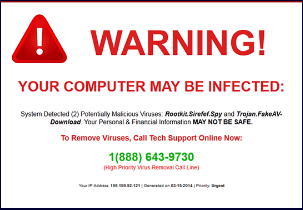

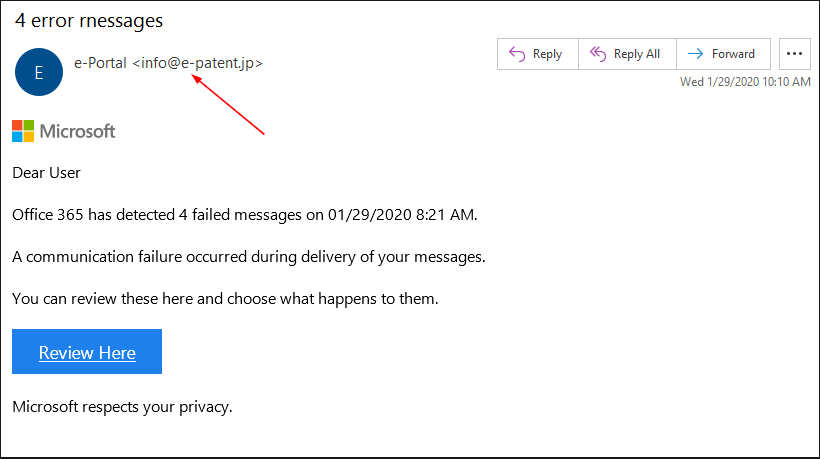
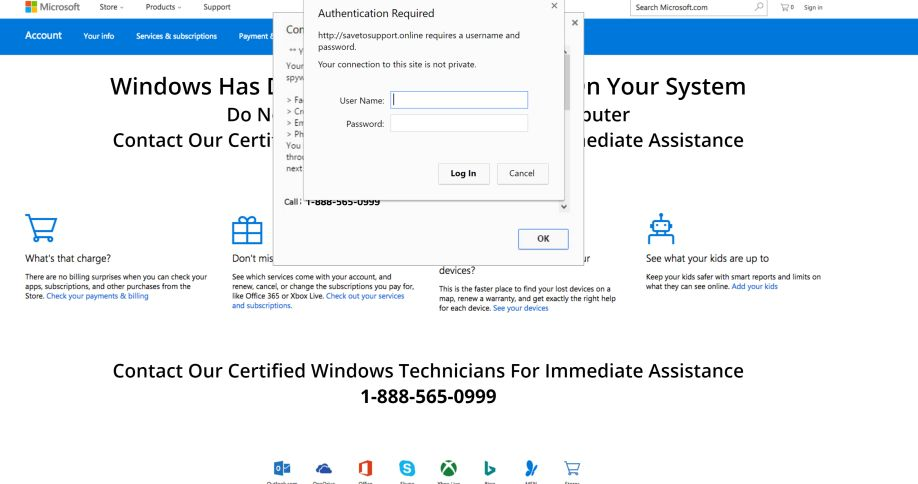
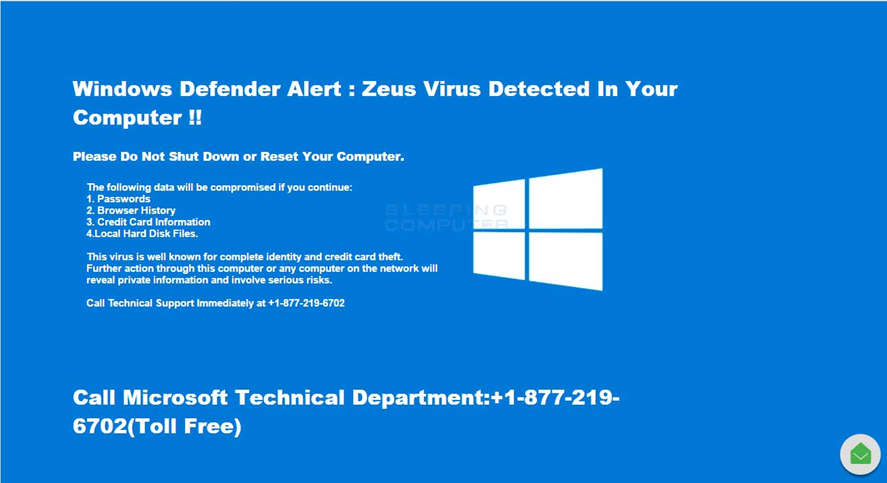










User forum
1 messages